Some Intriguing Exoplanets
Some intriguing exoplanets
An exoplanet or extrasolar planet is a planet that orbits a star other than the Sun. The first scientific detection of an exoplanet was in 1988. However, the first confirmed detection came in 1992; since then, and as of 1 April 2017, there have been 3,607 exoplanets discovered in 2,701 planetary systems and 610 multiple planetary systems confirmed.

1- Kepler-186f
was the first rocky planet to be found within the habitable zone – the region around the host star where the temperature is right for liquid water. This planet is also very close in size to Earth. Even though we may not find out what’s going on at the surface of this planet anytime soon, it’s a strong reminder of why new technologies are being developed that will enable scientists to get a closer look at distant worlds.

2- CoRoT 7b
The first super-Earth identified as a rocky exoplanet, this planet proved that worlds like the Earth were indeed possible and that the search for potentially habitable worlds (rocky planets in the habitable zone) might be fruitful.

3- Kepler-22b
A planet in the habitable zone and a possible water-world planet unlike any seen in our solar system.

4- Kepler 10-b
Kepler’s first rocky planet discovery is a scorched, Earth-size world that scientists believe may have a lava ocean on its surface.

5- 55 Cancri e
55 Cancri e is a toasty world that rushes around its star every 18 hours. It orbits so closely – about 25 times closer than Mercury is to our sun – that it is tidally locked with one face forever blisters under the heat of its sun. The planet is proposed to have a rocky core surrounded by a layer of water in a “supercritical” state, where it is both liquid and gas, and then the whole planet is thought to be topped by a blanket of steam.

6- 51 Pegasi b
This giant planet, which is about half the mass of Jupiter and orbits its star every four days, was the first confirmed exoplanet around a sun-like star, a discovery that launched a whole new field of exploration.

7- Kepler-444 system
The oldest known planetary system has five terrestrial-sized planets, all in orbital resonance. This weird group showed that solar systems have formed and lived in our galaxy for nearly its entire existence.

8- PSR B1257+12 system
Discovered in 1992 and 1994, the planets that orbit pulsar PSR B1257+12 are not only the smallest planetary bodies known to exist outside our solar system, they also orbit a neutron star. These weird “pulsar planets” demonstrated that planets exist in all environments in the galaxy – even around the remnants of an exploded star.

9- HD 80606 b
This world has the most eccentric orbit, and as one scientist put it, “wears its heart on its sleeve,” with storms, rotation, atmospheric heating, and a crazy orbit all plainly visible.

10- OGLE-2005-BLG-390
Considered to be the first cold super Earth, this exoplanet began to form a Jupiter-like core of rock and ice, but couldn’t grow fast enough in size. Its final mass is five times that of Earth. The planet’s nickname is Hoth, after a planet from Star War
Credits: NASA / JPL-Caltech
More Posts from Science-is-magical and Others
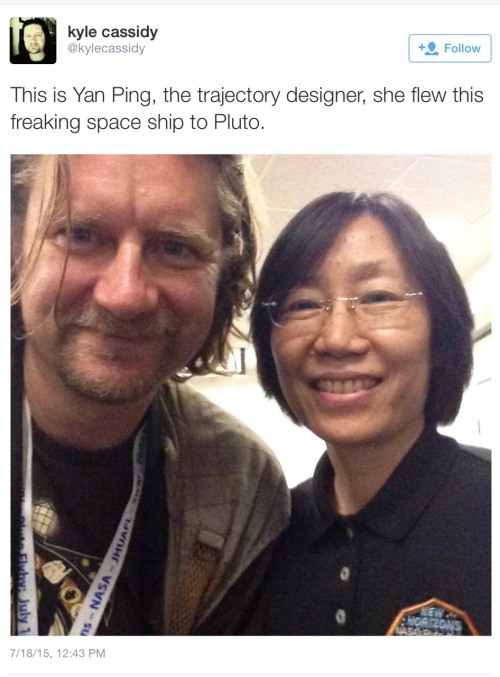

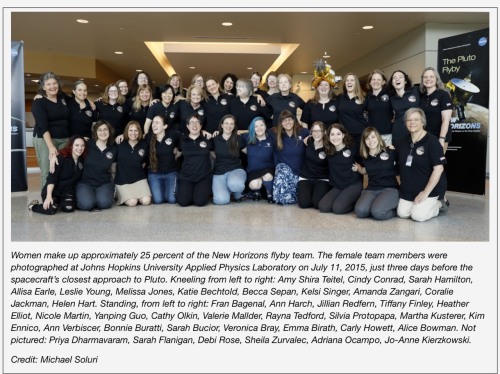
Women scientists made up 25% of the Pluto fly-by New Horizon team. Make sure you share this, because erasing women’s achievements in science and history is a tradition. Happens every day.
.
http://pluto.jhuapl.edu/News-Center/News-Article.php?page=20150712
Total breakdown in the brain
A stroke is just one example of a condition when communication between nerve cells breaks down. Micro-failures in brain functioning also occur in conditions such as depression and dementia. In most cases, the lost capacity will return after a while. However, consequential damage will often remain so that the functional capability can only be restored through lengthy treatment — if at all. For this reason, researchers at Friedrich-Alexander-Universität Erlangen-Nürnberg (FAU) have been investigating what happens during such breakdown phases and looking at possible ways of preventing damage and speeding up the healing processes. Their findings have been recently published in the eminent journal Scientific Reports.

(Image caption: Nerve cell networks visualised using high-speed fluorescent microscopy and then reconstructed with the software developed by Wrosch and her team. Credit: FAU/Jana Wrosch)
The research team headed by Jana Wrosch of FAU’s Chair of Psychiatry and Psychotherapy found that significant alterations occurred in neural cells while the communication pathways were blocked. Neuron networks reconnect during such periods of inactivity and become hypersensitive. If we imagine that normal communication pathways are motorways, when they are blocked a form of traffic chaos occurs in the brain whereby information is re-routed in disorganised form along what can be called side streets and minor routes. Additional synapses are generated everywhere and begin operating. When the signal is reinstated, the previously coordinated information routes no longer exist and, as in the case of a child, the appropriate functions need to be learned from scratch. Since they are receiving no normal signals during the phase of brain malfunction, the nerve cells also become more sensitive in an attempt to find the missing input. Once the signals return, this means they may overreact.
Nerve cells flicker when stained
Visualising the microscopically minute connections between the nerve cells is a major technical challenge. The conventional microscopic techniques currently available, such as electron microscopy, always require preliminary treatment of the nerve cells that are to undergo examination. However, this causes the nerve cells to die, so that the alterations that occur in the cells cannot be observed. To get round this problem, Wrosch and her team have developed a high-speed microscopy process along with special statistical computer software that make it possible to visualise the communication networks of living neurons. First, a video of the cells is made whereby an image is taken every 36 milliseconds. A special dye is used to stain the cells to ensure that the individual cells flicker whenever they receive a signal. Subsequently, the software recognises these cells on the video images and detects the information pathways by which the signals are transmitted from cell to cell.
The nerve cells are then exposed to the pufferfish poison tetrodotoxin to simulate the blocking of communication channels that occurs in disorders. After inducing communication breakdown phases of varying lengths, the researchers remove the toxin from the cells and determine how the nerve cell networks have changed during exposure. ‘Thanks to this concept, we have been finally able to discover what happens when communication is blocked,’ explains Wrosch. ‘Now we can try to develop medications that will help prevent these damaging changes.’ In future projects, the research team plans to examine the exact mode of action of anti-depressants on nerve cell networks and intends to find new approaches to creating more effective drugs.
It always creeps me out...
…that no matter

how close

you get
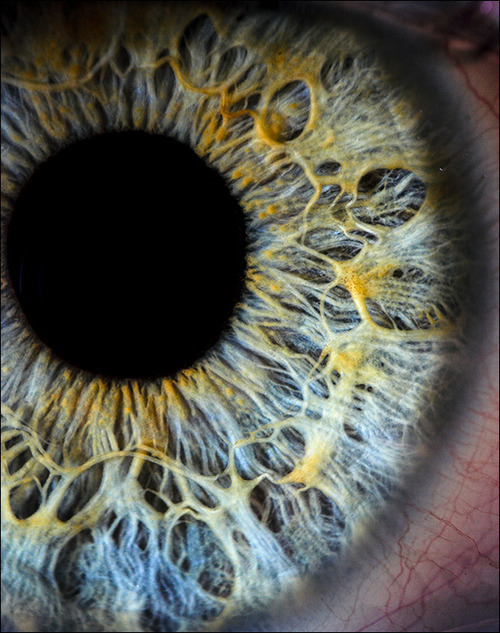
the pupil
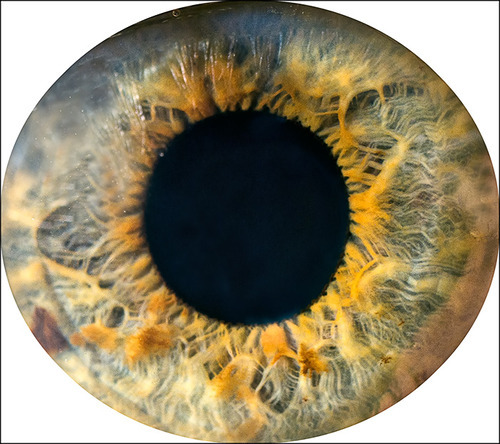
seems to
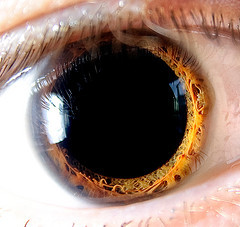
devour light
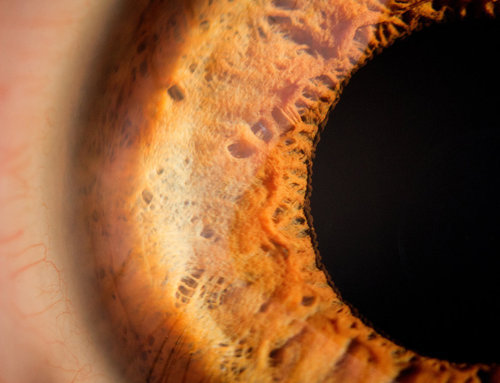
like a black hole
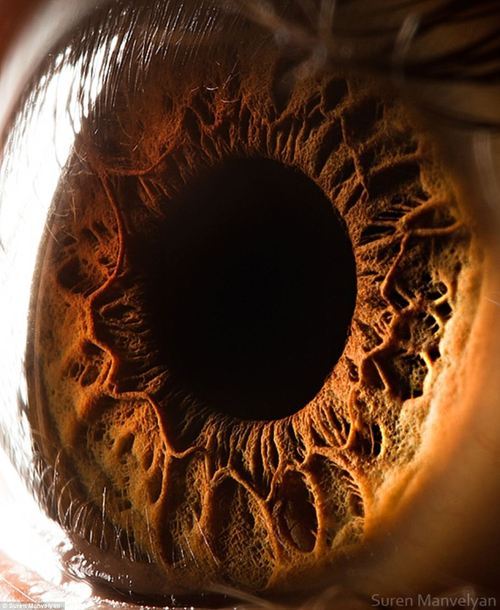
it reflects no light
This is the chemical formula for love: C8H11NO2+C10H12N2O+C43H66N12O12S2 dopamine, seratonin, oxytocin. It can be easily manufactured in a lab, but overdosing on any of them can cause schizophrenia, extreme paranoia, and insanity. Let that sink in.
(via mrzim)

Scientists have discovered the world’s oldest known water in an ancient pool in Canada that’s at least 2 billion years old.
Back in 2013 they found water dating back about 1.5 billion years at the Kidd Mine in Ontario, but searching deeper at the site revealed an even older source buried underground.
The initial discovery of the ancient liquid in 2013 came at a depth of around 2.4 kilometres (1.5 miles) in an underground tunnel in the mine. But the extreme depth of the mine – which at 3.1 kilometres (1.9 miles) is the deepest base metal mine in the world – gave researchers the opportunity to keep digging.
“[The 2013 find] really pushed back our understanding of how old flowing water could be and so it really drove us to explore further,” geochemist Barbara Sherwood Lollar from the University of Toronto told Rebecca Morelle at the BBC.
“And we took advantage of the fact that the mine is continuing to explore deeper and deeper into the earth.”
The new source was found at about 3 kilometres (1.9 miles) down, and according to Sherwood Lollar, there’s a lot more of it than you might expect.
Continue Reading.
Magnetospheres: How Do They Work?
The sun, Earth, and many other planets are surrounded by giant magnetic bubbles.

Space may seem empty, but it’s actually a dynamic place, dominated by invisible forces, including those created by magnetic fields. Magnetospheres – the areas around planets and stars dominated by their magnetic fields – are found throughout our solar system. They deflect high-energy, charged particles called cosmic rays that are mostly spewed out by the sun, but can also come from interstellar space. Along with atmospheres, they help protect the planets’ surfaces from this harmful radiation.
It’s possible that Earth’s protective magnetosphere was essential for the development of conditions friendly to life, so finding magnetospheres around other planets is a big step toward determining if they could support life.
But not all magnetospheres are created equal – even in our own backyard, not all planets in our solar system have a magnetic field, and the ones we have observed are all surprisingly different.

Earth’s magnetosphere is created by the constantly moving molten metal inside Earth. This invisible “force field” around our planet has an ice cream cone-like shape, with a rounded front and a long, trailing tail that faces away from the sun. The magnetosphere is shaped that way because of the constant pressure from the solar wind and magnetic fields on the sun-facing side.

Earth’s magnetosphere deflects most charged particles away from our planet – but some do become trapped in the magnetic field and create auroras when they rain down into the atmosphere.

We have several missions that study Earth’s magnetosphere – including the Magnetospheric Multiscale mission, Van Allen Probes, and Time History of Events and Macroscale Interactions during Substorms (also known as THEMIS) – along with a host of other satellites that study other aspects of the sun-Earth connection.


Mercury, with a substantial iron-rich core, has a magnetic field that is only about 1% as strong as Earth’s. It is thought that the planet’s magnetosphere is stifled by the intense solar wind, limiting its strength, although even without this effect, it still would not be as strong as Earth’s. The MESSENGER satellite orbited Mercury from 2011 to 2015, helping us understand our tiny terrestrial neighbor.


After the sun, Jupiter has by far the biggest magnetosphere in our solar system – it stretches about 12 million miles from east to west, almost 15 times the width of the sun. (Earth’s, on the other hand, could easily fit inside the sun.) Jupiter does not have a molten metal core like Earth; instead, its magnetic field is created by a core of compressed liquid metallic hydrogen.

One of Jupiter’s moons, Io, has intense volcanic activity that spews particles into Jupiter’s magnetosphere. These particles create intense radiation belts and the large auroras around Jupiter’s poles.

Ganymede, Jupiter’s largest moon, also has its own magnetic field and magnetosphere – making it the only moon with one. Its weak field, nestled in Jupiter’s enormous shell, scarcely ruffles the planet’s magnetic field.
Our Juno mission orbits inside the Jovian magnetosphere sending back observations so we can better understand this region. Previous observations have been received from Pioneers 10 and 11, Voyagers 1 and 2, Ulysses, Galileo and Cassini in their flybys and orbits around Jupiter.

Saturn’s moon Enceladus transforms the shape of its magnetosphere. Active geysers on the moon’s south pole eject oxygen and water molecules into the space around the planet. These particles, much like Io’s volcanic emissions at Jupiter, generate the auroras around the planet’s poles. Our Cassini mission studies Saturn’s magnetic field and auroras, as well as its moon Enceladus.


Uranus’ magnetosphere wasn’t discovered until 1986 when data from Voyager 2’s flyby revealed weak, variable radio emissions. Uranus’ magnetic field and rotation axis are out of alignment by 59 degrees, unlike Earth’s, whose magnetic field and rotation axis differ by only 11 degrees. On top of that, the magnetic field axis does not go through the center of the planet, so the strength of the magnetic field varies dramatically across the surface. This misalignment also means that Uranus’ magnetotail – the part of the magnetosphere that trails away from the sun – is twisted into a long corkscrew.


Neptune’s magnetosphere is also tilted from its rotation axis, but only by 47. Just like on Uranus, Neptune’s magnetic field strength varies across the planet. This also means that auroras can be seen away from the planet’s poles – not just at high latitudes, like on Earth, Jupiter and Saturn.

Does Every Planet Have a Magnetosphere?
Neither Venus nor Mars have global magnetic fields, although the interaction of the solar wind with their atmospheres does produce what scientists call an “induced magnetosphere.” Around these planets, the atmosphere deflects the solar wind particles, causing the solar wind’s magnetic field to wrap around the planet in a shape similar to Earth’s magnetosphere.

What About Beyond Our Solar System?
Outside of our solar system, auroras, which indicate the presence of a magnetosphere, have been spotted on brown dwarfs – objects that are bigger than planets but smaller than stars.
There’s also evidence to suggest that some giant exoplanets have magnetospheres. As scientists now believe that Earth’s protective magnetosphere was essential for the development of conditions friendly to life, finding magnetospheres around exoplanets is a big step in finding habitable worlds.
Make sure to follow us on Tumblr for your regular dose of space: http://nasa.tumblr.com

English-speaking parents tend to use vague, one-size-fits-all verbs as they emphasize nouns: cars, trucks, buses, bicycles and scooters all simply “go.” Mandarin speakers do the opposite: they use catchall nouns such as “vehicle” but describe action—driving, riding, sitting on, pushing—with very specific verbs. “As a native English speaker, my first instinct when a baby points is to label,” Tardif says. Her babysitter, on the other hand, was a native Mandarin speaker, whose instinct was to name the action she thought the child was trying to achieve.
via Twitter
-
 hvndrixx liked this · 4 months ago
hvndrixx liked this · 4 months ago -
 blacky-cat-blog liked this · 4 months ago
blacky-cat-blog liked this · 4 months ago -
 thetemperancecard reblogged this · 6 months ago
thetemperancecard reblogged this · 6 months ago -
 dylchillvill liked this · 6 months ago
dylchillvill liked this · 6 months ago -
 spiders-n-supercells liked this · 9 months ago
spiders-n-supercells liked this · 9 months ago -
 john-erby liked this · 1 year ago
john-erby liked this · 1 year ago -
 caffeinsanity liked this · 1 year ago
caffeinsanity liked this · 1 year ago -
 astrangeriddle liked this · 1 year ago
astrangeriddle liked this · 1 year ago -
 sssccrr liked this · 2 years ago
sssccrr liked this · 2 years ago -
 livingonthestars reblogged this · 2 years ago
livingonthestars reblogged this · 2 years ago -
 crookedcatstarlight liked this · 2 years ago
crookedcatstarlight liked this · 2 years ago -
 silencedminstrel liked this · 2 years ago
silencedminstrel liked this · 2 years ago -
 minori-natsuki reblogged this · 2 years ago
minori-natsuki reblogged this · 2 years ago -
 minori-natsuki liked this · 2 years ago
minori-natsuki liked this · 2 years ago -
 oh-sarahjane reblogged this · 2 years ago
oh-sarahjane reblogged this · 2 years ago -
 oh-sarahjane liked this · 2 years ago
oh-sarahjane liked this · 2 years ago -
 saturnbutterfly liked this · 3 years ago
saturnbutterfly liked this · 3 years ago -
 ladycordeliaa liked this · 3 years ago
ladycordeliaa liked this · 3 years ago -
 ladycordeliaa reblogged this · 3 years ago
ladycordeliaa reblogged this · 3 years ago -
 pixi3dvs7 liked this · 3 years ago
pixi3dvs7 liked this · 3 years ago -
 mirror-vicit-omnia liked this · 3 years ago
mirror-vicit-omnia liked this · 3 years ago -
 mahanoormoon liked this · 3 years ago
mahanoormoon liked this · 3 years ago -
 redwood63 liked this · 3 years ago
redwood63 liked this · 3 years ago -
 tresfoufou liked this · 3 years ago
tresfoufou liked this · 3 years ago -
 metalzoic liked this · 4 years ago
metalzoic liked this · 4 years ago -
 theelectricginmachine reblogged this · 4 years ago
theelectricginmachine reblogged this · 4 years ago -
 k-i-l-l-e-r-b-e-e-6-9 liked this · 4 years ago
k-i-l-l-e-r-b-e-e-6-9 liked this · 4 years ago -
 gh0stblonde reblogged this · 4 years ago
gh0stblonde reblogged this · 4 years ago -
 crype liked this · 4 years ago
crype liked this · 4 years ago -
 avianbabble liked this · 4 years ago
avianbabble liked this · 4 years ago -
 melaninhuntress reblogged this · 4 years ago
melaninhuntress reblogged this · 4 years ago -
 creativefictionlover liked this · 4 years ago
creativefictionlover liked this · 4 years ago -
 starworlds56galaxy39thdemension reblogged this · 4 years ago
starworlds56galaxy39thdemension reblogged this · 4 years ago -
 lostinthecosmoss reblogged this · 4 years ago
lostinthecosmoss reblogged this · 4 years ago -
 please-just-enough reblogged this · 4 years ago
please-just-enough reblogged this · 4 years ago -
 please-just-enough liked this · 4 years ago
please-just-enough liked this · 4 years ago -
 qawsedzxcrftgvbyhnujmiklop reblogged this · 4 years ago
qawsedzxcrftgvbyhnujmiklop reblogged this · 4 years ago -
 wowkalak liked this · 4 years ago
wowkalak liked this · 4 years ago -
 lorkhandreaming liked this · 4 years ago
lorkhandreaming liked this · 4 years ago


